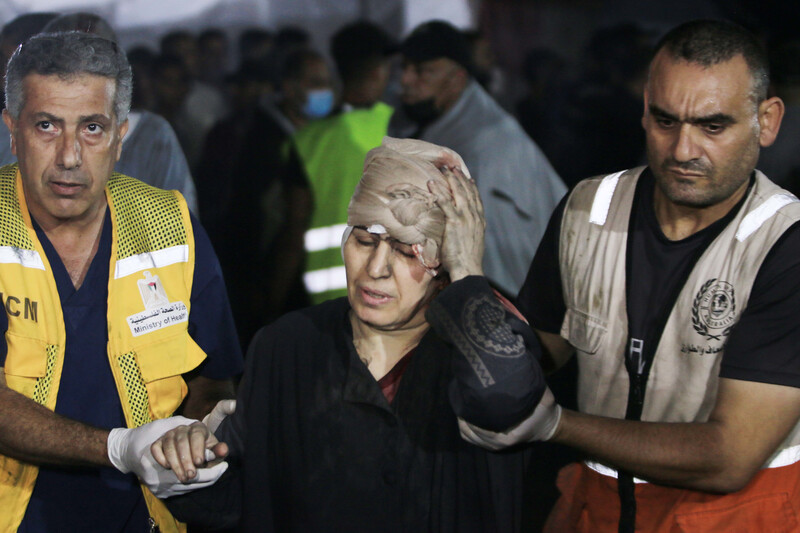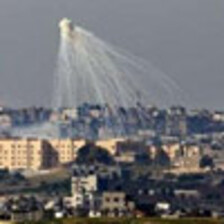The Electronic Intifada 26 November 2023

A wounded woman is brought to al-Shifa hospital on 6 November. Israel has targeted Gaza’s hospitals and only 10 from 35 are still functioning.
APA imagesIsrael’s war on Gaza has actually been a war on Gaza’s hospitals.
Just 10 of Gaza’s 35 hospitals are still operational.
One in particular has been in the headlines.
On 23 November, Israel announced that its military had detained the head of al-Shifa hospital Dr. Muhammad Abu Salmiya.
That followed a week-long siege of the hospital during which the military tried – and failed – to show that al-Shifa had been used as a Hamas headquarters or a command and control center.
What it did succeed in doing was take offline yet another hospital in Gaza, and this, the biggest and, by Gazan standards, best equipped.
Hospitals in Gaza were already short of essential supplies when the crossings closed completely after 7 October, because of the 16-year Israeli blockade of the territory that had left the health sector in Gaza chronically short of vital medicines and medical equipment.
When Israel then cut supplies of electricity, water, fuel, medical supplies, food and isopropyl alcohol, not to mention flour, food, children’s sweets, and pet food, all areas of civilian life were affected.
This assault on Gaza’s civilian infrastructure was signaled clearly in the language of Israeli officials, who have used genocidal terms to describe Palestinians, threatened nuclear annihilation, and generally treated Palestinians as “human animals, in the words of Israel’s defense minister Yoav Gallant.
Like hunters waiting for prey
The occupation has specifically targeted hospitals. And it did so at a time when these were no longer just places for patients, they had also become hoped-for sanctuaries for the displaced whose homes had been destroyed and who no longer had anywhere else to go.
“There is no place for life here, there is a place only for death,” my friend Farah told me.
Farah had sought safety at al-Shifa after her home was bombed, but was trying to leave the area because it was so dangerous.
“We’ve been through many bombings, but al-Shifa is the worst. There are people, children, bodies, death everywhere. I cannot find the words. I have no words. We have to leave.”
Israel’s siege and attack on al-Shifa hospital has proceeded without any consideration for any patient, whether they have cancer, kidney, liver or stomach ailments or have been wounded in Israel’s bombardment.
Thousands of people including doctors are in a critical situation. Approximately 250 medical staff have been killed.
And they’ve had to work under the worst of conditions. Early in the onslaught, doctors were puzzled by the burns they saw in patients, later determined to be from the use of white phosphorus.
Israel may have cut the lights in Gaza, but it lit the sky with white phosphorus bombs, and it lit the skin of those in the vicinity.
Israel has not only targeted the buildings of hospitals, but their solar panels, their last hope of generating power to keep services functioning.
“Israel is killing us,” said Zeina, who took shelter in al-Shifa with her family, where her father is an anesthesiologist. “Even if you beat the odds and live, you will not have medicine or care.”
Zeina said that once the Israeli troops turned up, “we were not allowed to move from room to room.”
“We chose to stay in the hospital with my father,” Zeina said. “He said if he was displaced to what they claim is the ‘safe south,’ who would stay to treat the wounded?”
Food and water had run out at the hospital, where no one understood what the Israeli troops wanted from the patients and wounded. Zeina said snipers positioned at the hospital, “like hunters waiting for prey,” made leaving impossible.
“We made our decision to stay together, live together or die together.”
Dima Ashour is a writer based in Gaza.




